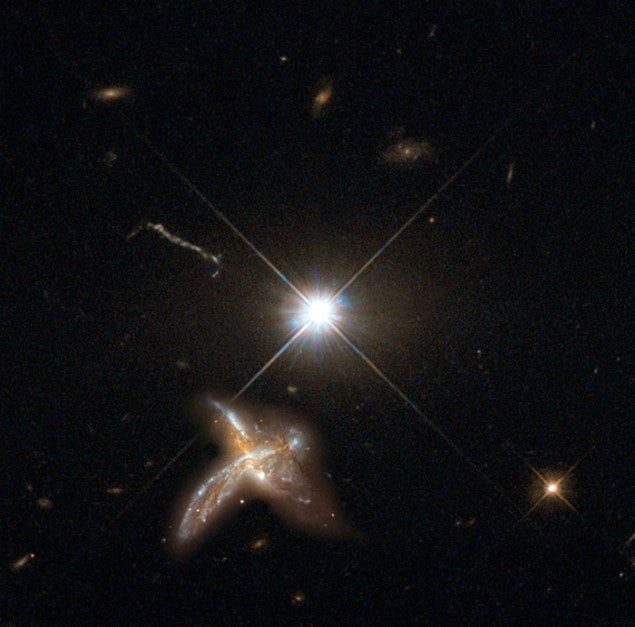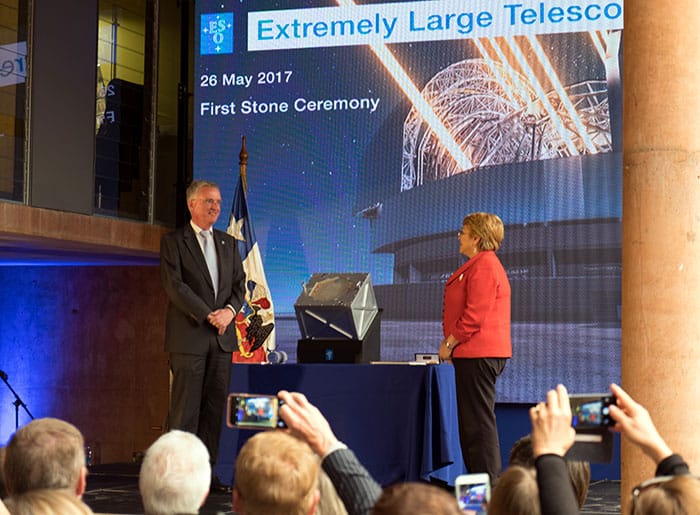Flash Physics is our daily pick of the latest need-to-know developments from the global physics community selected by Physics World‘s team of editors and reporters

New type of old galaxy is a prolific star-maker
Astronomers have discovered galaxies in the early universe that are creating stars more than a hundred times faster than the Milky Way. These rapidly growing galaxies formed less than a billion years after the Big Bang but are so distant that their light is only just reaching Earth, where it has been observed by researchers using the Atacama Large Millimeter/submillimeter Array (ALMA) in Chile. Roberto Decarli of the Max Planck Institute for Astronomy in Germany and colleagues were originally investigating star formation in very distant galaxies with quasars – the supermassive black holes at the centre of massive galaxies. “But what we found, in four separate cases, were neighbouring galaxies that were forming stars at a furious pace, producing a hundred solar masses’ worth of new stars per year,” Decarli explains. The Milky Way only forms one solar mass per year and other early universe galaxies had star formation rates between one and 10 solar masses per year. “Very likely it is not a coincidence to find these productive galaxies close to bright quasars,” says team member Fabian Walter. “Quasars are thought to form in regions of the universe where the large-scale density of matter is much higher than average. Those same conditions should also be conducive to galaxies forming new stars at a greatly increased rate.” The team suggests this chance discovery may explain a cosmic mystery – a population of massive elliptical galaxies from when the universe was 1.5 billion years old. Astronomers had been puzzled about how these had formed so many stars so quickly, but the newly found hyper-productive galaxies may be the answer. To determine if this is the case, follow-up observations will investigate how common this new type of old galaxy is. Also presented in the Nature paper, the ALMA observations showed the earliest known example of two merging galaxies.
Xmon quantum processor solves linear equations

Physicists in China are the first to use a superconductor-based quantum processor to implement a quantum algorithm for solving linear systems of equations. Yarui Zheng, Chao Song and Chao-Yang Lu of the Chinese Academy of Sciences and colleagues ran the HHL algorithm on a processor they built. It comprises four superconducting “xmon” qubits – which store quantum information in terms of the number of superconducting Cooper pairs held within each qubit. The HHL algorithm was devised in 2009 by Avram Harrow, Avinatan Hassidim and Seth Lloyd, and is able to solve a system of linear equations with N variables in a running time that scales with the logarithm of N. This is much faster than the best classical algorithm, which has a running time that scales with N. Solving large-scale systems of linear equations is crucial in many fields of science and engineering, and therefore there is great interest in developing a practical quantum computer that could perform this task. The HHL algorithm has already been demonstrated in quantum processors based on photons and nuclear magnetic resonance. However unlike xmon-based systems, both these technologies are not easily scaled-up for solving practical problems. While the team’s four-qubit system offers no advantage over a classical computer, they write in Physical Review Letters that “the superconducting quantum circuits could be used to implement more intricate quantum algorithms on a larger scale and ultimately reach quantum-computational speed-up”.
Construction begins on European super telescope

Work has begun on a huge telescope that will capture 15 times more light than any other optical telescope currently in existence. The $1.5bn European Extremely Large Telescope (E-ELT) is being built by the European Southern Observatory (ESO) on top of a 3 km-high mountain at Cerro Armazones in the northern Chilean Andes. The E-ELT will feature a 39 m primary mirror while the telescope’s secondary mirror will be up to 4 m in diameter. When complete in 2024, the E-ELT’s seven science instruments will study galaxy and planet formation as well as planets orbiting other stars, including probing their atmospheres using spectroscopic measurements. The “First Stone” ceremony to mark the start of construction was attended by Chile’s president, Michelle Bachelet, who noted that the E-ELT is “more than a telescope”. “It marks one of the greatest expressions of scientific and technological capabilities and of the extraordinary potential of international co-operation,” she adds.



